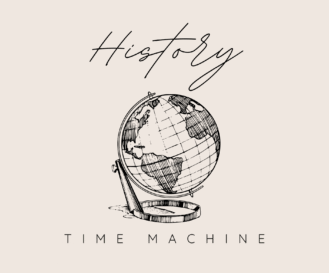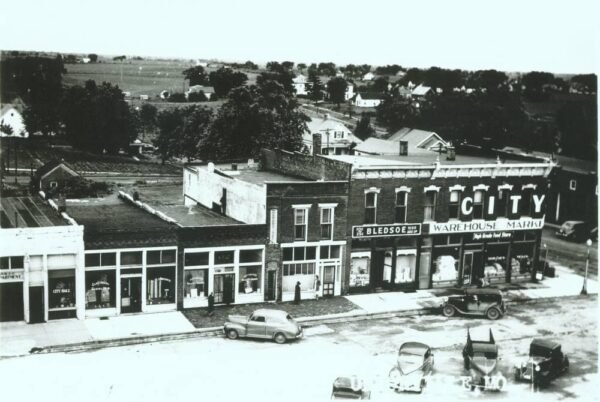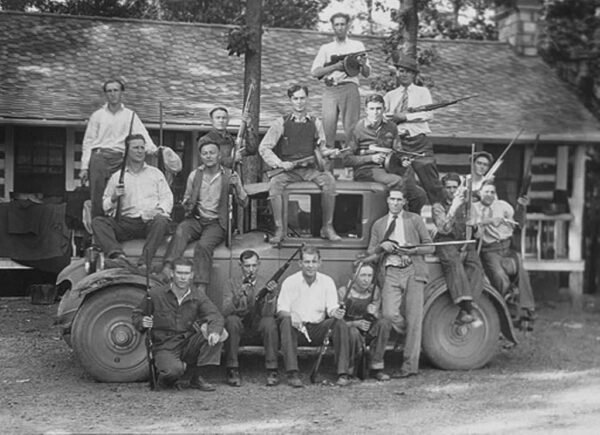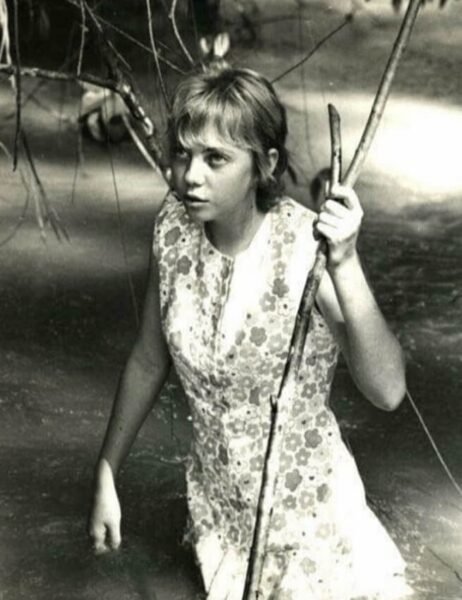
What Jobs for Women in the 1800s Really Looked Like
Jobs for women in the 1800s weren’t about dreams—they were about survival. And depending on where you lived and who you were, those jobs looked very different from the ones we think of today. From factories to farms, kitchens to classrooms, women did what they had to—quietly shaping history while rarely being recognized for it.
This was a time before women could vote. Before they had real rights in most places. But somehow, they still found ways to work, support families, and even fight for better futures behind the scenes. That’s part of why I find these stories so fascinating—and why we dug into what women actually did to earn a living back then.
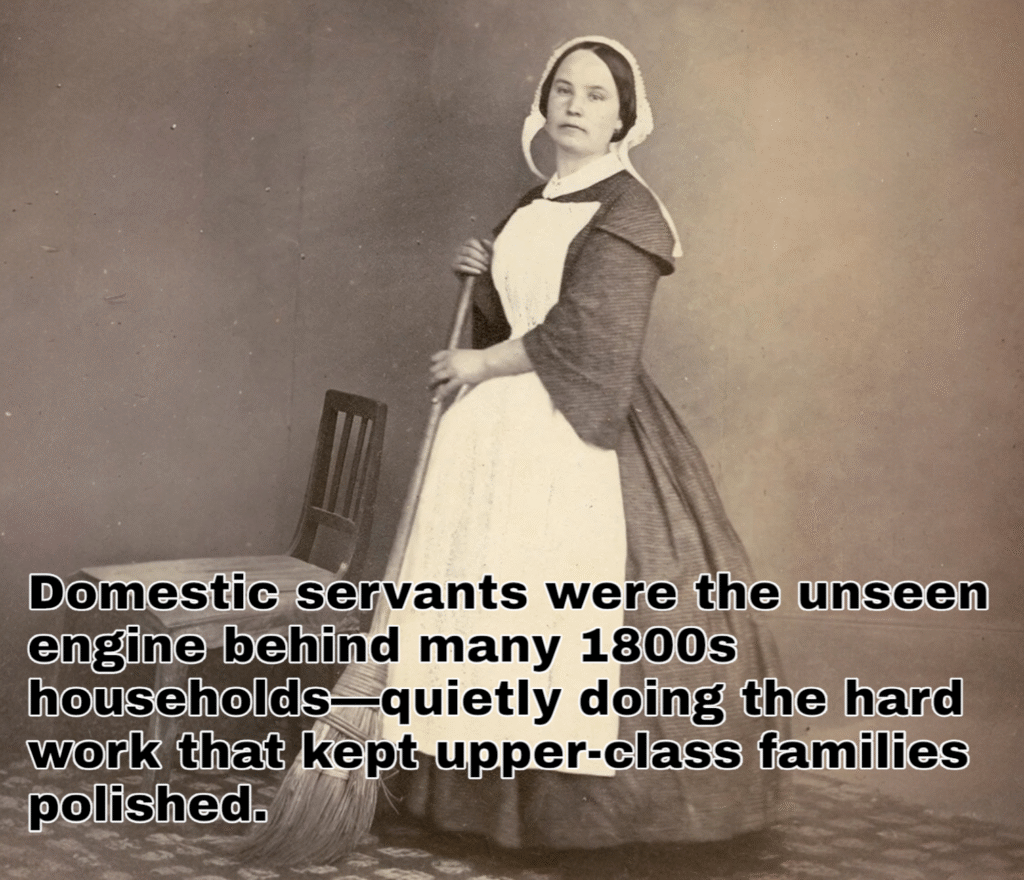
The “Help”: Domestic Work Was the #1 Job for Women
The most common job for women in the 1800s? Working in someone else’s house. It was called domestic service, and if you were a young woman without land, education, or a husband, this was your main option. Maids, cooks, nannies, washerwomen—you name it. And these roles weren’t optional. These were full-time, often live-in jobs where you worked long hours and followed someone else’s rules.
It’s hard not to picture scenes straight out of a Victorian saloon town, like the one captured in this glimpse of The Elkhorn Saloon in Lewistown, Montana, circa 1915 🍻—men drinking and playing cards while the women quietly swept the floors or worked the kitchen. Same country, two completely different lives.
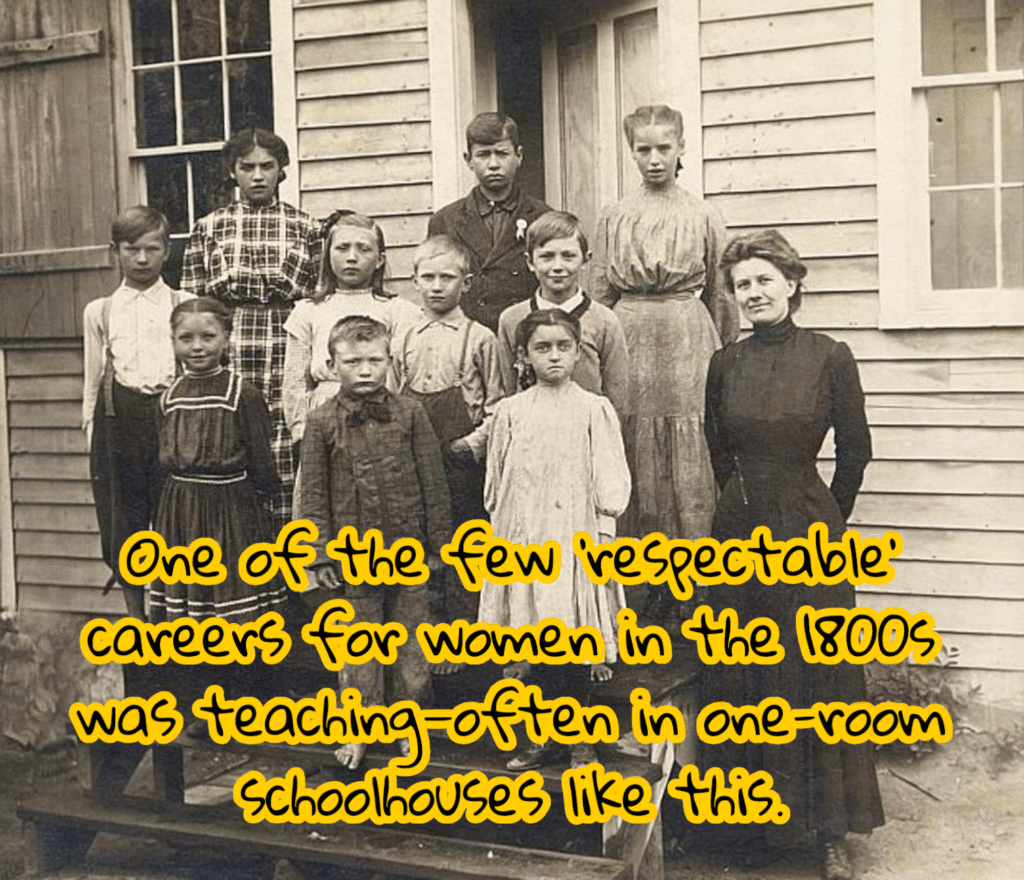
Teaching: One of the Few “Respectable” Jobs
If a woman had a bit of education and a clean reputation, teaching was one of the few “acceptable” career paths. Single women—often young and unmarried—were hired to teach children in rural schoolhouses or in small towns. But don’t get it twisted: they weren’t rolling in cash. Most earned barely enough to live, and as soon as they got married, they were expected to quit.
Still, it was a job that gave women a voice and some authority—something rare in the 1800s. It’s not hard to imagine these teachers walking the same dusty streets later shown in historic photographs from small-town life 🚶♀️—holding a stack of books and trying to keep a rowdy classroom of kids in line without much support.
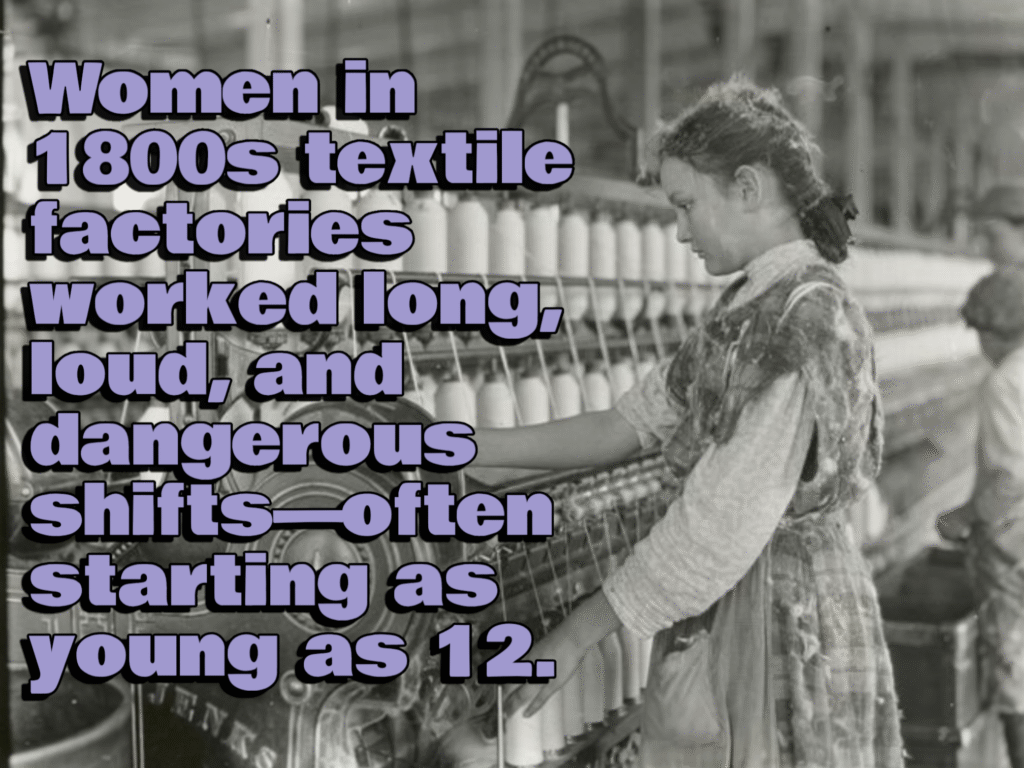
Textile Mills and Factory Floors
In the growing industrial cities of the Northeast, women filled textile mills and garment factories. These jobs were hard, repetitive, and often dangerous. Long hours, loud machinery, and poor ventilation made conditions rough. Still, many young women moved from farms to cities just for these opportunities. It was freedom in a way—some earned their own money for the first time ever.
The work was similar to the kind of manufacturing labor that boomed during later periods, like World War II, when women again filled factory roles while the men were off at war. And just like those wartime shifts, factory jobs in the 1800s also reshaped how women saw themselves—not just as homemakers, but as part of the workforce.
Want to dig deeper into how this later evolved? Check out how wartime rationing changed everyday American lives in this post on how gas was rationed during WWII ⛽.
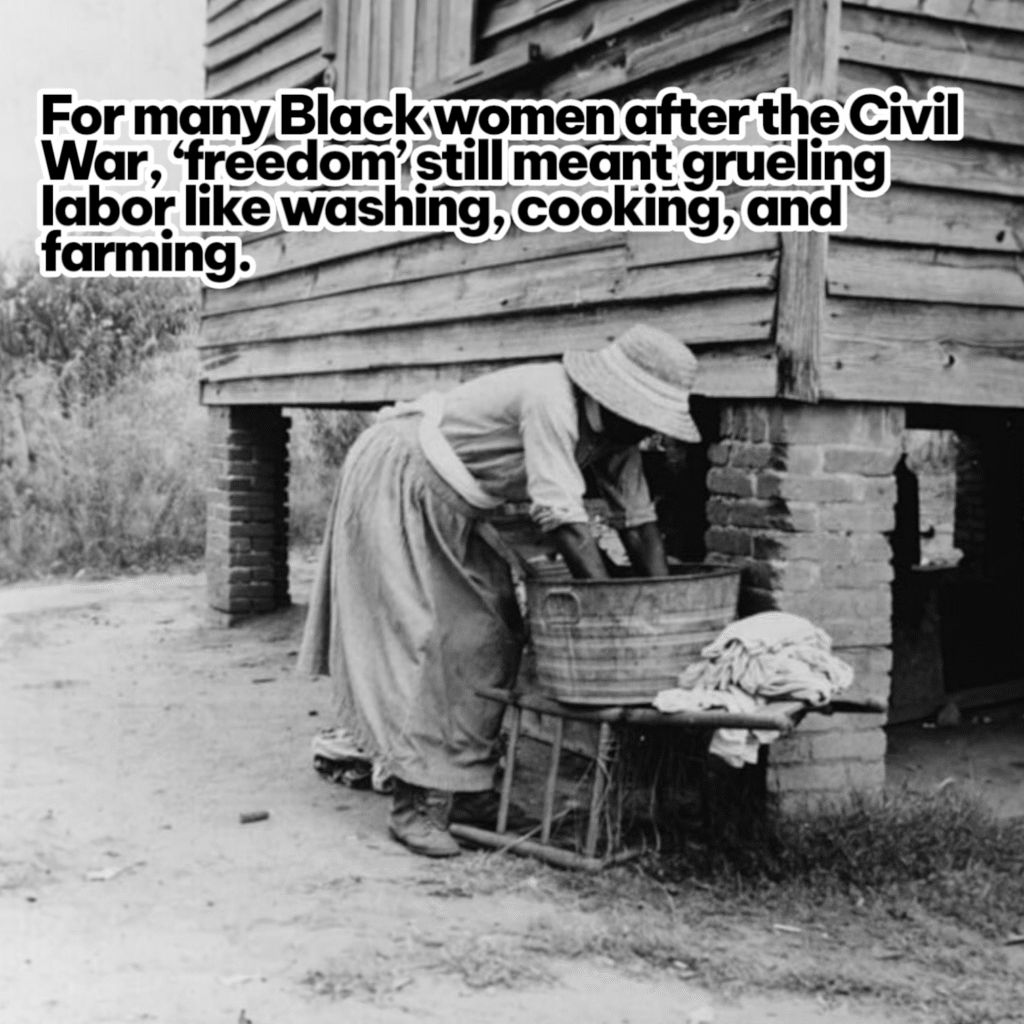
Working the Land: Farm and Field Jobs
Let’s not forget rural women. If you lived on a farm in the 1800s, your job was everything. You tended livestock, churned butter, canned food, raised children, planted crops, and probably made your family’s clothes. These weren’t considered “jobs” by most folks back then—but make no mistake, it was hard labor from sunup to sundown.
Even in the growing towns, some women worked in local gardens or sold produce and goods. It’s this same old-school grit that reminds me of the mindset behind pieces like the creative post about evolution of the lawn mower 🌱—tools and labor have come a long way, but the backbone of women’s work remains something worth honoring.
Seamstresses and Dressmakers: Stitching Together a Living
Sewing was one of the most skill-based and widespread jobs for women in the 1800s. Whether working from home or running a small shop in town, seamstresses made everything from petticoats to wedding gowns. Some specialized in hats or children’s clothing. It wasn’t glamorous, but it was work that women could do without male oversight—and that meant something.
Dressmakers often gained a reputation in town, sometimes even building a modest business of their own. And the fashion they produced gives us a unique window into the era—just like the hairstyles of 1800s men offer a glimpse into how people presented themselves during this time. If that kind of visual history fascinates you, don’t miss this breakdown of men’s 1800s haircuts 💈

Midwives and Healers: The Women Behind the Births
Before doctors were common in small towns, it was women—especially older, experienced women—who handled births, fevers, injuries, and infections. These midwives and healers often learned their skills through family traditions, trial and error, or local apprenticeships. They weren’t always recognized professionally, but they were absolutely essential to their communities.
Some were also herbalists who mixed natural remedies and poultices, using what they had around them to treat everyday ailments. Their work often blurred the line between folk knowledge and early medicine, which is part of what made them both respected and misunderstood.
Entertainers, Performers… and the Sideshow
Though less common and often frowned upon, some women in the 1800s made a name for themselves in the world of entertainment. Theater, dance halls, traveling medicine shows—even circus sideshows—provided unconventional ways for women to earn a living. These weren’t easy paths. Performers were often judged harshly and lived on the edges of society.
But some women thrived in these roles, carving out fame and fortune despite societal norms. If you’re intrigued by lives lived far outside the mold, you might enjoy reading about Frank Lentini—the man with three legs 🤹♂️, who worked the same carnival circuits these women often shared.
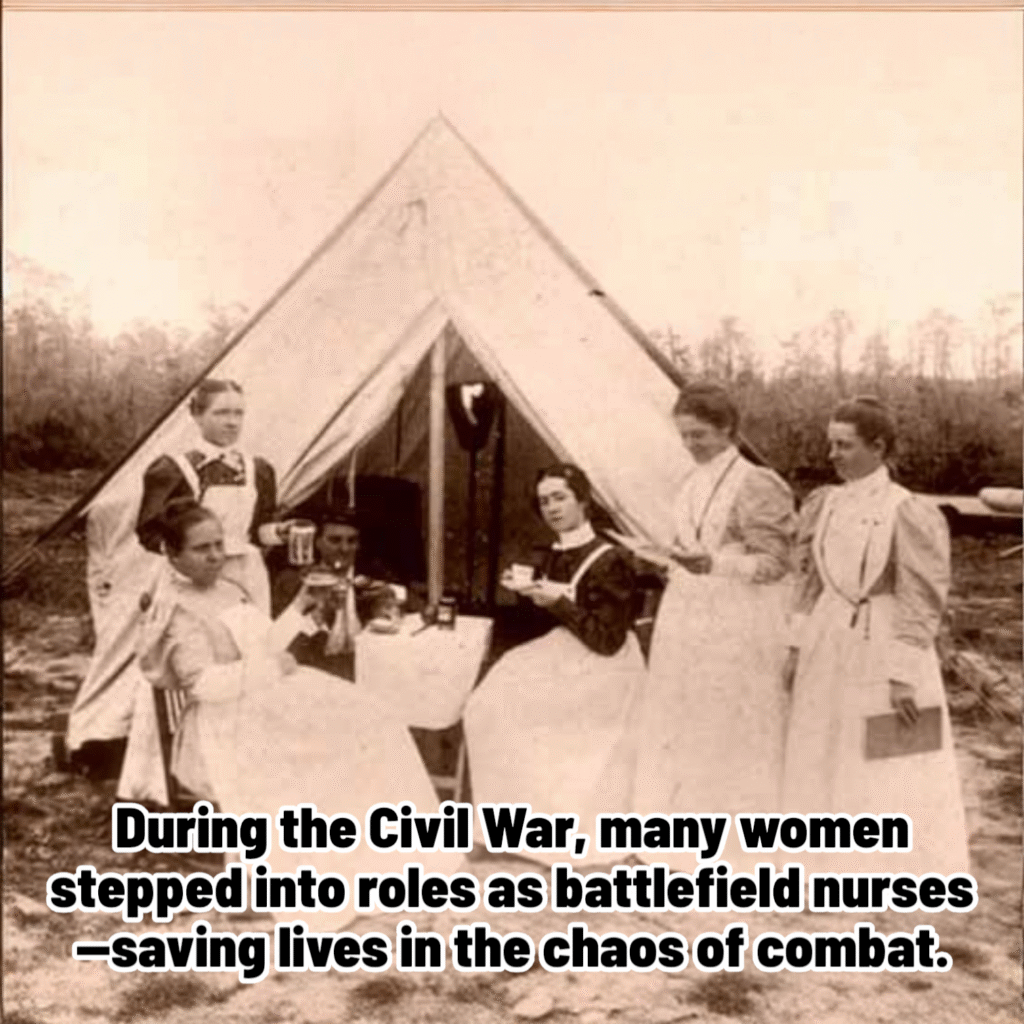
War and Widowhood: When Women Stepped Up
When the Civil War broke out, everything changed. Jobs for women in the 1800s expanded out of necessity. With so many men gone, women filled factory jobs, ran farms, became nurses, and handled business affairs on their own. Some even disguised themselves as men to fight. War gave many women their first real taste of independence, even if it came through tragedy.
And speaking of war-era struggles, rationing, separation, and survival weren’t limited to just World War II. You can see how those themes evolved in this story about gas rationing during WWII ⛽—a later chapter in how women continued to hold families and towns together when times got tough.
Race and Class: Not All Women Had the Same Options
Let’s be real—race and class shaped every opportunity in the 1800s. Wealthy white women might have become teachers or helped run a family business. Poor women, especially immigrants or Black women, had far fewer options. Many were forced into harsh labor, like laundering, field work, or even indentured service.
The legacy of this inequality shows up in so many corners of history. Even when you look at something as simple as an old saloon photo or a wartime artifact, you’re seeing layers of privilege and struggle hidden beneath the surface. It’s one of the reasons we aim to tell stories that include all walks of life—whether it’s WWII’s forgotten first soldier on Normandy Beach 🪖 or the kids who shaped culture in the ’80s.

Teaching and the Slow March Toward Respect
One of the few respectable careers women could hold in the late 1800s was teaching. In rural towns especially, women taught in one-room schoolhouses, often overseeing students from age 5 to 15. The pay was low and the expectations high. Married women were often barred from continuing to teach—so it was seen as a job for young, single women only.
But over time, this role helped shift public opinion. Teaching allowed women to be viewed as leaders, thinkers, and educators—paving the way for greater roles in the decades to come. It’s a far cry from the days of scrubbing floors in a stranger’s home, and it shows how slowly but surely, women began writing their own chapter in American history.
As an Amazon Associate we earn from qualifying purchases through some links in our articles.
